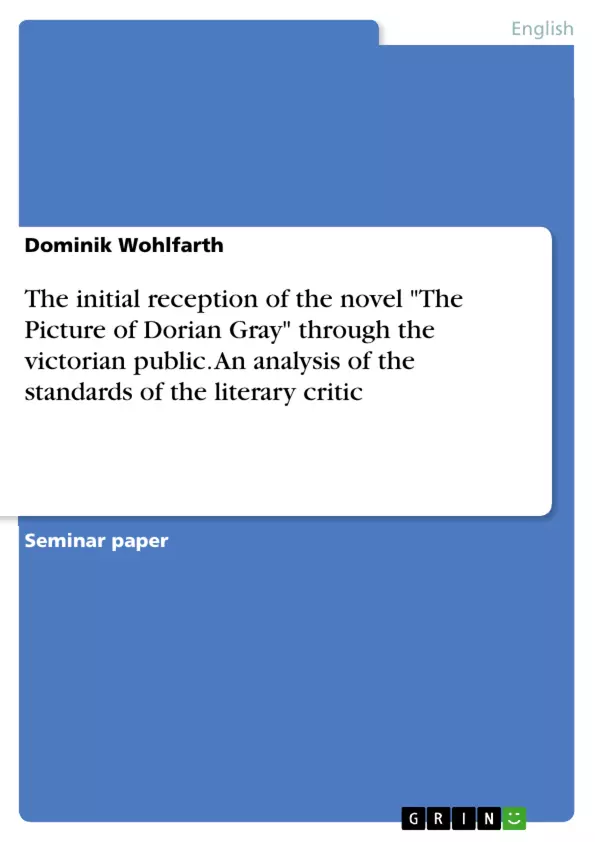This paper will be separated into three main parts. The first examines late-Victorian moral values, literary standards as well as Oscar Wilde´s view of art and its criticism.
The second part explores reactions of the audience, especially the press, to Wilde´s novel The Picture of Dorian Gray..
The third part then critically analyses these arguments and explains the role Victorian values and the resulting literary expectation played in the criticism.
Inhaltsverzeichnis (Table of Contents)
- I. Introduction
- II. Victorian values and literary standards
- III. Reception of The Picture of Dorian Gray
- IV. Critical analysis of different opinions and society in context to the story
- V. Conclusion
Zielsetzung und Themenschwerpunkte (Objectives and Key Themes)
This paper explores the reception of Oscar Wilde's novel The Picture of Dorian Gray by the Victorian audience, focusing on the interplay between literary criticism and the prevailing social values of the time. The analysis delves into the Victorian expectations of morality and literature, contrasting them with Wilde's aesthetic principles and his defense of art for art's sake.
- Victorian societal values and their influence on literary standards
- The reception of The Picture of Dorian Gray by Victorian critics and the public
- The role of Victorian morality in shaping critical responses to the novel
- Oscar Wilde's aesthetic philosophy and its defense of artistic freedom
- The conflict between Victorian moral expectations and the artistic principles of Aestheticism
Zusammenfassung der Kapitel (Chapter Summaries)
- I. Introduction: This chapter introduces the main themes of the paper, outlining the focus on Victorian moral values, literary standards, and the critical reception of The Picture of Dorian Gray.
- II. Victorian values and literary standards: This chapter analyzes the social and moral norms of Victorian England, exploring their impact on the creation and reception of literature. It delves into concepts like Victorian morality, religious influence, and the ideal of manliness. Additionally, it examines the emergence of Aestheticism as a counterpoint to these prevailing standards and how Oscar Wilde utilized it to defend his work.
- III. Reception of The Picture of Dorian Gray: This chapter examines the reactions of the Victorian audience, particularly the press, to Wilde's novel. It explores the critical responses and how they were shaped by the prevailing moral climate.
Schlüsselwörter (Keywords)
The key concepts and themes explored in this paper include Victorian morality, literary standards, Aestheticism, The Picture of Dorian Gray, Oscar Wilde, critical reception, societal values, and the conflict between art and morality.
- Quote paper
- Dominik Wohlfarth (Author), 2003, The initial reception of the novel "The Picture of Dorian Gray" through the victorian public. An analysis of the standards of the literary critic, Munich, GRIN Verlag, https://www.grin.com/document/13873



